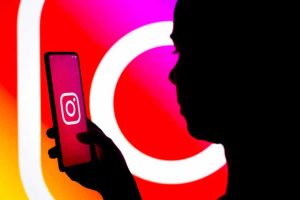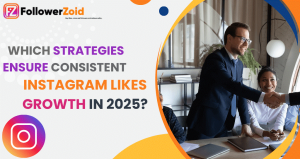You’re not just scrolling — you’re playing.
Whether it’s chasing likes on Instagram, maintaining a streak on Snapchat, or going viral on TikTok, your social media habits and the social media content you engage with are part of a much bigger game. Social media strategies leverage gamification to engage different audiences, tailoring interactive elements and rewards to maximize participation and build loyal communities. Without even realizing it, millions of users are participating in highly engineered digital environments designed to reward behavior and keep us coming back for more. This isn’t just about addiction or attention spans — it’s about how social platforms have adopted the principles of game design to capture engagement in ways that feel fun, competitive, and even addictive. And the same principles are now shaping other online experiences as well — from mobile apps to platforms like Sixty Casino, where gamified interaction is central to user enjoyment.
Welcome to the world of social media gamification, where your feed is the playing field and your actions — every like, swipe, comment, and post — are calculated moves in a digital game you didn’t even sign up to play. Social media is a powerful tool for engaging audiences and building brand recognition, providing marketers with new ways to foster familiarity, trust, and a strong brand identity. In this article, we’ll explore social media gamification examples and how major social platforms use gamification to hook users, why it works, and what it means for the future of digital interaction.
What Is Social Media Gamification?
Gamification is the application of game-like elements — points, levels, challenges, rewards — in non-game contexts. In the realm of social media, that means turning everyday interactions into mini-achievements. The goal? Drive behavior. Increase engagement. Keep users glued to the screen. Effective social media gamification strategies rely on key metrics and key elements such as rewards, branding, and user-generated content, and follow a process that encourages participation through structured stages like launching challenges, tracking involvement, and rewarding active users.
Think about it:
- Likes and hearts? Those are points.
- Follower milestones? That’s leveling up.
- Streaks and badges? Achievements.
- Challenges and trending sounds? Daily quests.
- Participation in contests and challenges? That’s a primary goal of these gamification strategies.
Social media platforms have borrowed heavily from video game psychology to enhance user retention and emotional investment. With every scroll, you’re unknowingly navigating systems designed to reward your behavior in business — often in ways that mirror the structure of a mobile game.
The result is a digital experience that’s not just social — it’s strategic, habit-forming, and competitive.
From Swipes to Streaks: The Psychology Behind It
At the heart of social media gamification is behavioral psychology, specifically dopamine-driven feedback loops. Every time you receive a like or a comment, your brain releases a small amount of dopamine — the same neurotransmitter associated with winning, pleasure, and even gambling. These mechanics are carefully designed to create an enjoyable experience that encourages users to participate actively, making interactions more engaging and rewarding.
Social platforms capitalize on this by introducing variable rewards, a concept pulled directly from slot machine design. Instead of consistently rewarding the same action, they deliver unpredictable outcomes. For instance:
- Sometimes your post goes viral.
- Sometimes you get no engagement.
- Sometimes a story sticker triggers a flood of replies, promoting active participation.
This unpredictability keeps you engaged — just like a player pulling the lever on a slot machine again and again in hope of a jackpot.
Another tactic? Progress mechanics. Take Snapchat’s streaks — the app rewards users for consecutive days of communication, reinforcing daily engagement. Features like badges and achievements are specifically designed to boost participation and encourage users by recognizing their accomplishments and motivating them to stay involved. It’s a simple concept, but the fear of “breaking the streak” becomes a powerful motivator.
Platform Deep Dive: How Each App Gamifies Engagement
Each social media platform uses a unique strategy to create engaging gamified experiences, tailoring features and content to their audience. Every social platform leverages different tools—like polls, quizzes, and interactive stories—to foster participation and community building. Let’s break down how the biggest platforms are turning users into players.
TikTok
TikTok is perhaps the most gamified social app today. Its infinite scroll mimics the mechanics of a slot machine — you never know what’s coming next, but you always want to see one more video.
Key gamification elements:
- “For You” algorithm acts like a reward dispenser.
- Creator tools (filters, effects, duets) add layers of interactivity.
- Viral challenges and interactive posts, such as polls and challenges, mimic mini-game missions and encourage direct audience participation.
- Analytics like completion rate and engagement percentage serve as “scores.”
TikTok campaigns, especially those using branded hashtag challenges, drive user engagement by encouraging users to participate, create user-generated content, and interact with the brand, often incentivized with rewards or prizes.
Instagram has shifted from photo-sharing to gamified engagement machine.
- Badges during Lives reward fans who donate.
- Reels bonuses give creators tangible rewards.
- Polls, sliders, and quizzes on Instagram Stories turn passive viewing into interaction.
- Engagement-based algorithm “rewards” content that triggers action, creating a loop where users learn how to “win” visibility.
Social media posts that encourage participation, such as interactive challenges or contests, help boost engagement and attract new followers. Reaching follower milestones on Instagram is often gamified, motivating users to stay active and involved.
Snapchat
Snapchat pioneered social gamification:
- Streaks encourage daily interaction.
- Snap Score quantifies activity and fosters comparison.
- Trophies and unlockable lenses feel like in-game achievements.
- AR lens challenges make users creators and players at the same time.
- Snapchat encourages audience participation and builds a sense of community by engaging participants in interactive challenges, live streams, and social sharing activities.
YouTube Shorts
YouTube Shorts adds gamified layers for both creators and viewers:
- Watch time milestones for monetization mirror leveling systems.
- Comments and like thresholds affect video push and visibility.
- Trending sounds function like power-ups for discoverability.
- YouTube Shorts highlights top performers through featured placements and uses analytics to track performance, allowing creators to measure their success based on engagement metrics and viral reach.
Real-Life Consequences: The Good, The Bad & The Addictive
Gamification isn’t inherently bad. It can encourage creativity, routine, and even social connection. For creators, it introduces a clear reward structure: post often, engage well, grow faster. It also makes platforms more interactive and playful. One key benefit of gamification is its ability to improve customer engagement and foster loyalty, which can lead to significant benefits for business, such as increased brand retention and more meaningful interactions with audiences.
But there’s a darker side.
- Addiction: Dopamine loops are the same mechanisms behind gambling.
- Burnout: Creators feel pressure to maintain output or risk being penalized by the algorithm.
- FOMO: Fear of missing out on trends or breaking engagement streaks drives unhealthy behavior.
- Performance anxiety: Users begin to equate digital metrics with self-worth.
As platforms gamify more aspects of digital life, users may feel less in control of their time — and more like unwilling players in a game that never ends.
Gamification Beyond Apps: Brands, Influencers & Challenges
Gamified behavior extends far beyond the platforms themselves. Influencers, brands, and users adopt social media gamification strategies to boost engagement and visibility. Many brands use social media campaigns and gamified content as a core part of their marketing strategy to attract customers, increase sales, and build anticipation for new products or events.
- Influencers: Use “engage to win” strategies — comment contests, voting games, “choose my outfit” polls.
- Brands: Launch unique hashtag challenges (ex. #GuacDance by Chipotle) with call-to-action mechanics that mimic mini-quests, encouraging user generated content and rewarding customers for participation.
- Gamified giveaways: “Tag 3 friends, share to story” = viral growth mechanic that motivates customers to share content and be rewarded.
- Micro-challenges: TikTok dance challenges or “day in the life” trends operate like optional game missions for users to complete, generating user generated content and engaging the audience.
Brands use analytics tools to track performance, measure success, and gather more data and valuable insights about their target audience and market, allowing them to refine their marketing and social media marketing practices. Employee advocacy programs, supported by expertise and best practices, encourage employees to share branded content and participate in campaigns, further amplifying reach and engagement.
Gamified content and social media marketing drive more traffic to a brand’s website, foster customer loyalty, and help brands build lasting relationships with their customers and audience.
This creates a feedback loop where users become co-creators in branded experiences — all under the rules of gamified attention.
What’s Next: The Future of Gamified Attention
As AI, AR, and creator tools evolve, the next phase of gamification may be even more immersive. Effective gamification will increasingly depend on advanced social media tools and ongoing gamification efforts, as brands leverage these technologies to build community engagement and measure success before investing in more complex systems.
Expect:
- Augmented Reality quests on Instagram or TikTok that blend real world with app missions.
- Attention-based monetization — rewarding users for watch time, engagement, or sharing.
- Gamified wellness features — platforms rewarding “digital breaks” to balance screen time.
But the question remains: Should platforms be responsible for how deeply gamification influences our mental health and habits?
As calls grow louder for ethical UX design, we may soon see guardrails placed around the most addictive mechanics — or a new wave of apps designed to be playful, but mindful.
Social media has evolved from a place of connection to a sophisticated, gamified ecosystem. Every scroll, swipe, like, and comment is part of a behavioral feedback loop — one engineered to hold our attention through fun, reward-based systems.
Understanding social media gamification isn’t just about tech literacy — it’s about regaining agency in how we interact online. The next time you find yourself chasing a post’s performance or watching “just one more” reel, ask yourself: Are you still just scrolling — or are you playing to win?





